 Adolf Loos Adolf Loos Mies Van Der Rohe Mies Van Der Rohe Le Corbusier Le Corbusier Hannes Meyer Hannes Meyer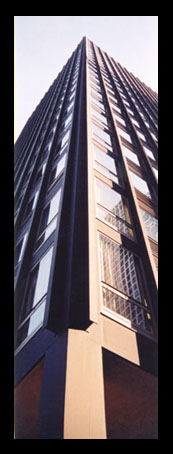 860–880 Lakeshore Drive 860–880 Lakeshore Drive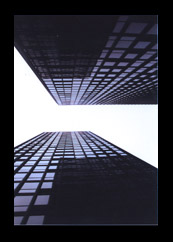 860–880 Lakeshore Drive 860–880 Lakeshore Drive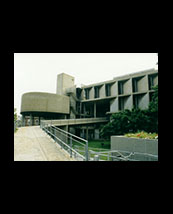 Carpenter Center Carpenter Center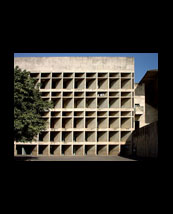 Chandigarh Chandigarh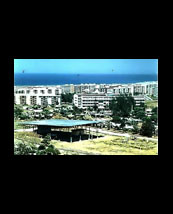 Alamar Alamar | Reinaldo N. Togores This paper was read on April 26, 1991 within the cycle of lectures held to celebrate the creation of the Plastic Artists Association's Environmental Design Section of the Cuban National Union of Writers and Artists (UNEAC). Part IThe fact that we, a group of Architects and Interior Designers, have formed a section within the Association of Plastic Artists of the UNEAC should not seem at first sight something worth greater attention as Architecture has traditionally been considered, alongside Painting, Sculpture, Music and Literature, as one of the a so-called Fine Arts. But that we have had to wait almost thirty years to do it is undoubtedly a striking fact (1). The delay in recognizing in Architects and Designers of Environments and Objects the same stature as artists that is recognized in Painters, Sculptors, Musicians and Writers, reflects the contradictions that mark these times in which we've had to live and work. Undoubtedly, these contradictions have left their mark on what we have been able to do and the way we have done it. In his analysis of Architecture in the five years following the establishment of the socialist system, Professor Joaquín Rallo asserted that: "...two main trends have been noted in post-revolutionary architectural work. A pragmatic, positivist, technocratic, pseudorationalist trend without major conceptual base or aesthetic intentionality, which has promptly dealt with the urgency of the impending tasks. Their motto could be: many cubic meters of production that will not collapse, that wont cost much, that will outdo completion deadlines. Quantity, in short... The other trend is more complex and corresponds to a culturalist or aestheticizing approach to Architecture." (2) Considered this way, either black or white with no intermediate shades, the issue becomes all too simple. If so, how could one explain that intelligent people, as undoubtedly those that through the years have ruled the destinies of the UNEAC are, have hesitated so much in accepting us, those involved in the second band -culturalists and aestheticizers according to Rallo- in the bosom of their organization? Indeed it is difficult to disentangle those two opposing camps. Who in his right mind would defend that those many cubic meters of edification should lack the required robustness, or that their cost is more than it should or that execution times extend beyond what is normal? On the other hand, cultural or aesthetic intention in a work does not necessarily entail a waste of resources. Nor do I think it can be said that this tendency defined as 'pragmatic, positivist, technocratic and pseudoracionalistic' is devoid of a conceptual base. That conceptual basis exists and has dominated architectural thought for most of this soon concluding century of ours. I am referring to the theory of functionalism, which in good measure gives rise to the 'modern movement' in architecture. That there should be a number of facts that justify the investment made when designing and building an edification is not new. The fulfillment of a certain function is not an exclusive characteristic of modern or 'functionalist' architecture. Already in ancient Rome, Vitruvius defined that. "Under defence comes the planning of walls, towers, and gates, permanent devices for resistance against hostile attacks; under religion, the erection of fanes and temples to the immortal gods; under utility, the provision of meeting places for public use, such as harbours, markets, colonnades, baths, theatres, promenades, and all other similar arrangements in public places. All these must be built with due reference to durability, convenience, and beauty." (3) Nor is it a feature unique to architecture. 'Art for art's sake' is only possible when the production cost of the work can be financed by the artist himself, as is the case of easel painting in recent times. The usual situation is described by Bernard Berenson in these terms: "As a matter of fact, it was the employer who gave his orders as he would to a carpenter, tailor or shoemaker. The artist could be creative and personal to the extent of his natural and acquired capacity, but always within the condition imposed by the person who gave the order." (4) If architecture -and even more so art- has always been functional in the sense that it should, in addition to delighting us with its beauty, meet a number of requirements related its utility and strength, one might ask: what does our century's pretention to make it 'functionalist' mean? In his review of past century's architectural literature, English historian Peter Collins detects the symptoms of a deep inferiority complex (5). Artists in general, and in particular architects, feel ostracized. The nineteenth century was the inventor's century. Of men like Edison, Morse and Bell enabling instant communication over long distances; like Fulton, Otto, Daimler and Ford increasingly accelerating transportation; like Daguerre and Lumière in recording and reproducing images;like Colt, Gatling and Nobel announcing the possibility of extermination. Their artifacts populated the world, extending man's capabilities in a way never before dreamed of. By mid-century sculptor Horace Greenough proclaimed that 'American mechanics has left artists behind' (6). The artist feels ashamed of his status. He feels isolated and neglected by the public at large. Given this state of isolation, given this feeling of not being up with the times, in the face of this inferiority complex the Architect suffers when compared to the Edisons and other 'superstars' of the day, his attitude is that of the transvestite who by assuming the attire of the being whom he admires, denies his own nature. Adolf Loos is adamant in his rebuttal: "Architecture is not an art, because whatever serves a purpose should be excluded from the sphere of art" (7). If architecture is not an art we must reject the usual conceptual frameworks, replacing them with others that are perceived as more 'scientific' and therefore more appropriate to the new personality adopted. This struggle against traditional ways has its hobby-horse in the denial of style. The arts, and therefore architecture, have traditionally been governed by parameters that define what, according to the moment's perceptual habits is appropriate and correct. Electric lighting or the telegraph have nothing to do with style. The inventor is ruled by experimentally demonstrable physical laws, and to the public at large their creations should seem like coming out of the blue, conditioned by no historical precedents. However, this rejection does not occur in connection a notion of style in the abstract but in front of the concrete expression of the dominant taste of the times: eclecticism. But eclecticism, as style, has very special characteristics. Its defining feature is precisely the absence of a physiognomy of its own. An eclecticist appropriates the formal lexicon of all preceding styles and selects those elements which seem appropriate to the specific program to solve at any given time. Hence the curious situation that by pretending to reject style, the modern architect precisely rejects the negation of style, the non-style of eclecticism. Willing to revolutionize, it regresses instead. This 'negation of the negation' assumes once again, despite its stated intentions, the nature of a style. But in this case it amounts to something like its reversed image: a negative style. A style in the traditional sense is based on a series of generally abided precepts, its essence is prescription. Functionalism -a negative style- swaps prescription for proscription. The new physiognomy of architecture stems not from features it includes but rather from those it excludes. Mies van der Rohe embodies this paradox in one of the basic axioms of the modern movement: 'less is more' (8). Ornament in particular, is proscribed. Adolf Loos stands as judge and rules: 'ornament is a crime'(9). But ornament has always been symbolic, conforming a core around which memory, conscious and subconscious meanings and associations crystallize. With its proscription historical memory is also proscripted (10).
By the late '50s these slogans, so repeated in the modern movement's texts, were a matter of faith for us then beginning architecture. How to proceed in the technical, economic and functional analysis was revealed to us, we discovered the secrets of modular coordination, of urban planning regulations, of breezes and sunlighting. We learned how to define a structural grid. We structured horizontal and vertical circulations starting from diagrams and arranged about them spaces dimensioned according to the program's requirements. We closed walls and opened windows in accordance with the most recognized lighting and ventilation rules. All this we did in the firm belief that, as stated by master Hannes Meyer, 'if a building provides adequately, completely and without compromise for its purpose it will be a good building, regardless of its appearance'(11). But something is not working. After so much study, after pages full of organograms, flowcharts, of functional relations matrices, of shadow and wind rose diagrams, After so much study, after pages full of organograms, flowcharts, of functional relations matrices, of shadow and wind rose diagrams, we are facing yet another squalid block, of those that populate all Alamar-like (12) urban developments the world has seen. Already in 1937 W. C. Behrendt, a theorist and historian of the modern movement had been forced to admit that the eclectic architect: "reaches a sensory effect which is often lacking in modern buildings, which still rarely go beyond the purely utilitarian forms" (13). This, of course, was not the case of the great masters of functionalist architecture. They always cheated. The exposed metal structures in Mies van der Rohe's skyscrapers do not support the building. The real structure is hidden and covered with concrete, as required by fire regulations. Le Corbusier uses in the Carpenter Center for the Visual Arts the same brise-soleils used in his buildings in India,although Boston's climate hardly justifies it. However, the theory of functionalism outlives its begetters betrayal. It survives as a justification for technocrats and perhaps also as an alibi for the inept. |


